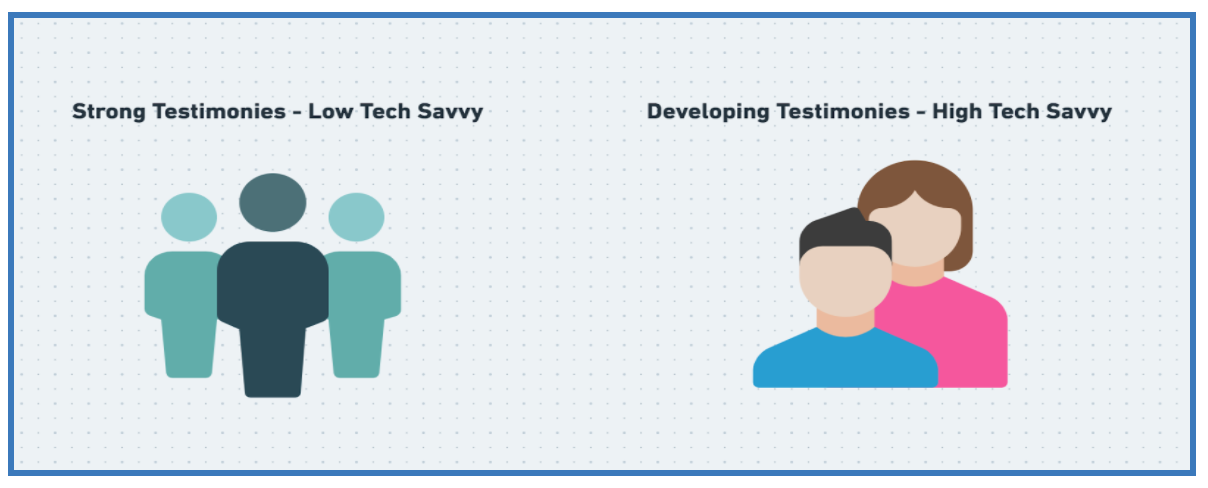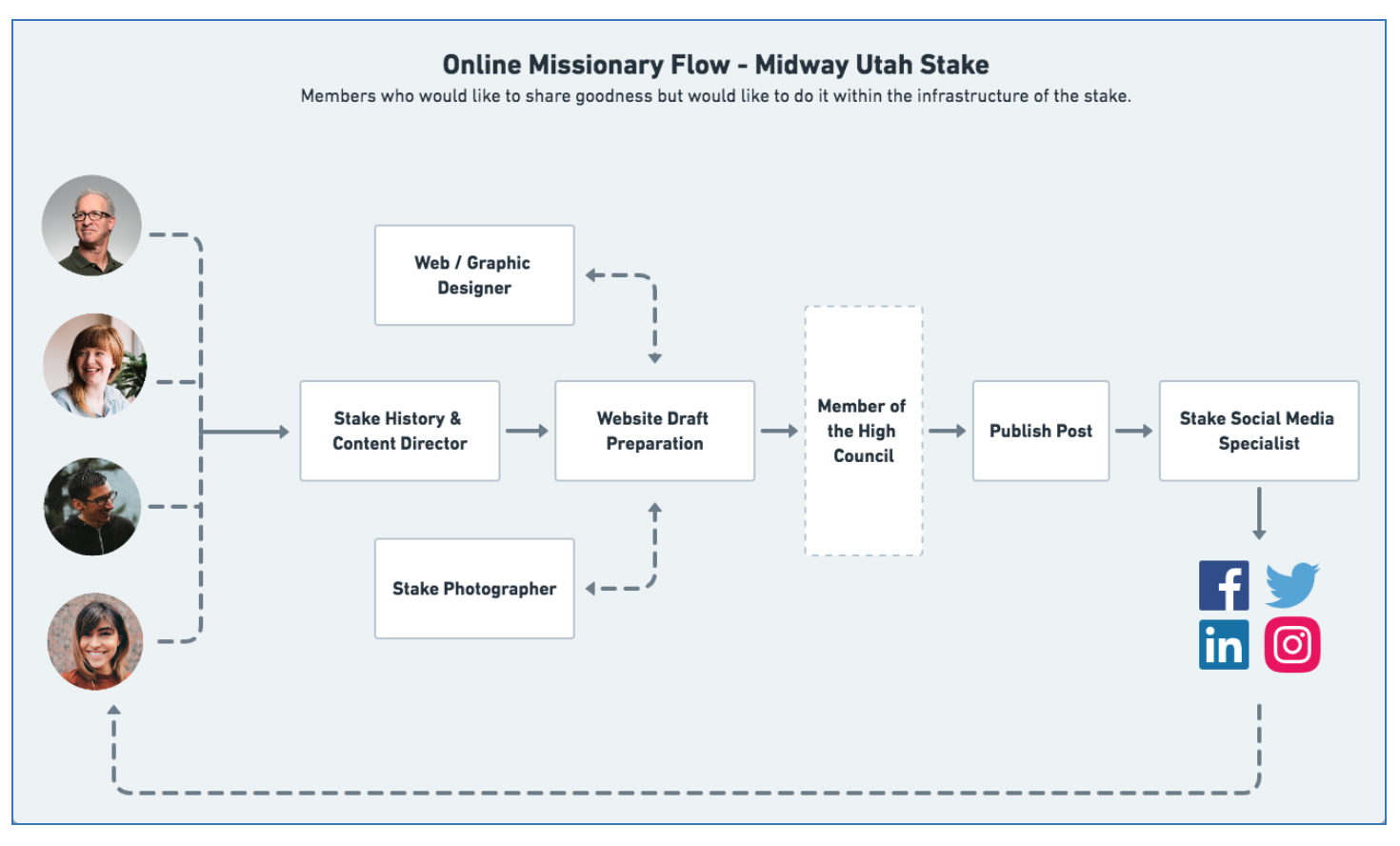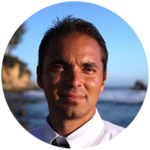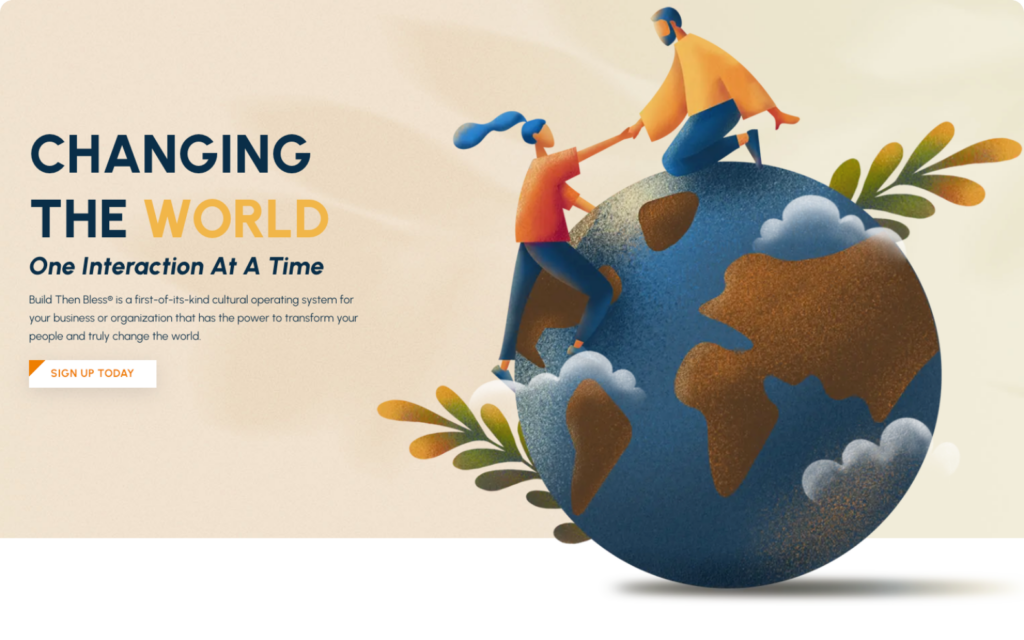I am grateful to be a part of this church and the high value and emphasis it places on missionary work. I’m also grateful for every single moment in which I am able to be a part of this great work.
The following outline comes as a suggestion for Stake Presidencies who are looking for a way to implement a virtual stake mission plan. Because of the frequency in which I get asked this question based on the book The Virtual Missionary, I have created an implementation guide here for anyone that has a desire to use it.
Please check the Church Handbook of Instruction for any updates regarding any of the things you find in this plan in order to remain compliant with the policies of the church.
Virtual Stake Mission Plan (Suggestions)
Context:
I have prepared a suggested plan that consists of yoking two primary groups of people:

We ask those that have a wealth of knowledge and experience, but no desire to build a blog or interact on social media, to share their testimonies with the world through the infrastructure and training that a stake can provide to their members. Then we ask those that already use social media and the internet to utilize their skills to amplify their own messages and the messages of others. (This is the pattern that the brethren follow with their online efforts. Follow their social media accounts to see what they do and how they do it.)
The execution of this plan is done through a three phase implementation. The phases are:
- The Introduction Phase – Building a foundation
- The Follow up Phase – Training
- The Measure and Iteration Phase – Improve results
I believe that we can get the most enthusiastic adoption in the stake by teaching the “why” of online missionary work and then providing a framework for them that makes it as easy as possible for them to contribute. By removing technological barriers for people, we will increase the number of people willing to participate and exponentially increase our effectiveness among all ages and demographics. I believe that we will have a far greater impact if we are able to draw upon the seasoned and experienced members of the stake who may not have a desire or inclination to learn new technologies at their stage in life.
Disclaimer
First of all, I want you to know that I don’t think I have all the answers. Any of the stakes I’ve helped with this in the past have been under the direction and at the request of the area seventy or the stake presidency. I don’t want anyone to think I’m just out there organizing these things on my own. I haven’t made any of these suggestions except at the request of other more senior priesthood authorities. What follows is just my best effort to help them and others utilize the tools we have today to bring people to Christ.
Secondly, I have always believed that the power of missionary work, retention, and ministering is at its best when done by the actual members. Not entities. There is no shortage of entities out there. But your friends don’t relate to entities. They relate to you!
- Imagine someone posts their testimony about Christ and the restoration to all of their Facebook friends. What do you think will be more powerful? They post it as a friend, with their own name, vulnerabilities and all? Or they post it as “Awesome LDS Themed Facebook Page?”
- Number one… no one is going to see the post from the entity page because of the algorithms.
- Number two, no one is going to care because most of the time, people don’t identify with entities. They identify with people.
- One caveat to that is starting a Facebook group. There is reach and power in groups… but that can be a topic for you to cover somewhere else.
In a perfect world, there would be one church entity with their associated website and “official” social media accounts. Then that website and those accounts would serve as a church-wide repository, knowledge base, and library of goodness.
Then the stakes, if desired, could follow suit, drawing upon the resources of the church’s official website in order to mobilize their local congregations to create and share good content generated by the members and missionaries in those local congregations. The church could create a framework and guidelines from which members of their stake could be trained to do online missionary work on their own.
People could be trained just as we train temple and family history specialists to use technology to perform genealogical research and gather our dead.
And then ultimately, members of those local congregations would then take their own messages, and the messages of those that are in their stake, as well as those messages that come from the general leadership of the church and then share them out to their friends from their personal social media accounts and websites.
The power will come when an army of members and missionaries together are mobilized to produce and share good, positive, and true content in what I would consider the frontier of missionary work… but have been trained on how to do it correctly.
Implementing A Virtual Stake Mission Plan
—————
Introduction Phase
Building the Infrastructure for Online Missionary Work In The Stake
The following are my suggestions on how to successfully roll out a stake wide missionary program that would help members of the church share their testimonies of the restored gospel of Jesus Christ both locally and globally. These suggestions are laid out chronologically in order to maximize adoption and sustainability.
▢ Organize a committee at a stake level (callings extended) who will be responsible for developing and maintaining the infrastructure for online missionary work and public relations. That committee would include but not be limited to:
- Member of the stake presidency
- Member of the high council to serve as a content gatekeeper and liaison with the rest of the committee. (Someone with a solid doctrinal foundation and good judgement.)
- Web developer/graphic designer
- Social media specialist (Post content and maintain the group.)
- Public relations specialist (Interacting with the community.)
- Photographer (For documentation and events)
- Content director (Facilitate submitted content and also request content with release and approvals)
▢ Build a stake website as a syndication platform for members who would prefer to not worry about technology but would love to share their testimonies and related faith building experiences with others. This site will serve as a central repository for faith promoting stories, histories, and important announcements that can be referenced by members of the church and community.
▢ Create a Stake Facebook group for the purpose of sharing the information that is found on the stake website. The Stake Facebook group will also make important announcements and help other members share information on their personal profiles. (Social media is the vehicle for driving people to the content.)
▢ Meet with the committee and train them on the process and vision behind this online missionary effort. Make assignments and then train each member of the committee on their respective assignments. This should be able to be done quickly within this meeting and each portion of the training will be relevant to the other members of the committee. Use the given flowchart as a guide for implementing and training the members of the committee on their respective responsibilities.
▢ Meet with the bishops and ask for their support on a ward level. The “ask” from them would consist of three things:
- Would they be willing to find and call a social media specialist in their ward to help train other ward members how to use social media and the internet for sharing goodness online? (Similar to genealogy specialists)
- Would they be willing to support the stake missionary plan by taking note of good talks and other faith promoting stories by encouraging ward members to submit it to the stake Content Director or publish on their own blog or personal social media accounts.
- Encourage their ward members, possibly through a 5th Sunday discussion or through other means to get their ward excited about both traditional missionary work and online missionary work. (Train members how to use technology tools and the internet to minister and reach out to others with their chosen method of communication.)
▢ With buy-in and excitement from the core leadership in the ward and stakes, find a time to introduce online missionary work as part of an overarching mission plan to the general membership of the wards and stakes. A special fireside, stake conference, or whatever means works best with the general theme of “Hastening the Work.” That event could include:
- Evaluating the 1st Presidency and Quorum of the Twelve’s missionary efforts, including their online efforts and find ways to support and follow them in their efforts.
- Methods for doing online missionary work.
- Education on the “why” behind online missionary work.
- How to avoid pitfalls and incorrectly using social media.
- Etc.
Content Flow

Step 1 – Leaders and Members submit faith-promoting experiences and testimonies to the Stake History & Content Director Specialist.
Leaders in the wards and stake are made aware of the stake’s desire to publish and promote anything that falls within the realm of the 13th Article of faith. Leaders and members who have given good talks, inspiring firesides, or would like to share their testimony online will submit their experience to the “Stake History & Content Director Specialist.” This is the first gatekeeper of the content.
Step 2 – The Stake History & Content Director Specialist prepares the content for publication.
The content is received by this “content director.” He or she reads and organizes the content and places the content in a “Draft” format.
Step 3 – The blog post is edited and prepared.
The content director will engage the graphic designer and/or photographer in order to get the content prepared for publication. Graphics and images are what make or break a blog posts ability to get shared and read.
Step 4 – A final draft is prepared for review.
When the content is ready to go, a final draft is prepared and sent to the high councilor that is assigned to oversee the online efforts. It can also be sent to other reviewers if necessary such as a member of the Stake Presidency.
Step 5 – Publish the post on the website.
The content director will then publish the site pending the approval of the high councilor or other assigned gatekeeper. He or she will then notify the Stake Social Media Specialist
Step 6 – Stake Social Media Specialist posts to social media.
The stake social media specialist takes the recently posted content from the website and then posts it to the relevant social media groups and pages. He or she then notifies the person that provided the content piece and asks them to share it on their social media profiles and also to share it with their family and friends. They would also ask members of the stake to share the content if they felt so inspired to share it with their friends.
Step 7 – Ward and Stake members post good content to their social media, reaching friends and neighbors.
Help and train members in their ward and stakes about how to find good content (From local resources and from general church resources) to post on their social media accounts and also encourage them to share their own testimonies of the gospel on their social accounts.
Follow-Up Phase – Training
Supplemental Ideas For The Stake Mission Plan – Post Introduction
The introduction phase is intended to lay the foundation for mobilizing the leadership and members to get started with online missionary work. At this point we will have provided them with the technological infrastructure and training needed to be able to venture into this new frontier of missionary work. With the vehicle built and the members on-board, we can now begin to follow up with strategies for success.
Additional Action Items To Drive The Success and Sustainability of Missionary Work in The Stake:
▢ Ask the ward mission leader to spend the bulk of his efforts on inactive and part member families.
▢ Ask the missionaries to also focus on inactive and part member families in conjunction with the Ward Mission Leader.
▢ Ask missionaries to find social media handles for inactive and non member families that they are teaching and connect with them, and then ask them to help members/neighbors to connect with them as well.
▢ Ask the Elder’s Quorum and Relief Society Presidents to dedicate their efforts to searching out inactive and part member families.
▢ Ask the youth leaders to engage in more service projects and activities that involve members of the community. Look for ways to serve non-members.
▢ Ask the entire Ward Council to be mindful of members who are struggling with their faith and find ways to embrace them.
▢ Ask the entire ward to find ways to minister and support people in person and on social media. Always follow up a new introduction with a social media request if possible. Linkedin, Facebook, Instagram or whatever the person’s primary method of social media might be. The point is to get active in their lives and social media is the most efficient way to do that without being too intrusive initially.
▢ Social media is not going away and so we must know how to utilize it for good. Provide training for the stake/wards to help them shift their mindset while using social media. Most people use social media in a mind-numbing, endless scrolling, passive and consumptive way. Members should be trained on how to ensure they have a clean feed, and how to use social media to support, uplift, and share goodness. Ask members to follow the prophet and the Quorum of the Twelve on social media and then pattern their usage of the platforms after them.
▢ Challenge the youth and adults to share one gospel related post per week on social media. Challenge them to connect with their neighbors on social media and then make positive comments when those neighbors post on social media as long as it meets standards.
▢ Make members of the stake aware of all the online resources the church has made available to us for sharing and encouraging others.
▢ Ask the bishops to ensure that every sacrament meeting is taught using the scriptures, focused on Christ, and that all aspects of the restoration and any personal stories find their way back to testifying of Christ and our Heavenly Father’s plan for us. (Sacrament meeting is the first and most important meeting that investigators and inactive members looking to return to activity will attend. They’ve got to come away edified and rooted in the Savior’s teachings. That meeting has to be dedicated to Him.)
Measure and Iteration Phase
Improve and adapt over time
▢ Analyze the metrics and engagement with online resources.
▢ Determine what strategies are working and what strategies are not and then improve our methods over time.
▢ Provide ongoing support and training for leaders and members.



